Page 89 of 170

89n
IndexDataTechnologyRepairsCar careControlsOverview
Antilock Brake System (ABS)Information for your safetyNot even ABS can suspend the laws
of physics. The consequences of brake
applications with inadequate clear-
ances for safety between vehicles,
excessive speed or if aquaplaning
occurs are always the responsibility of
the driver. You should never allow the
added safety of ABS to mislead you into
taking risks of any kind.
Do not make any modifications
to the ABS system.
Service procedures on ABS are to be
performed by authorized technicians
only.<
In case of a system malfunction
If the ABS warning lamp comes
on, refer to page 21. The brake
system will then function the
same as on vehicles without
ABS. However, have the brake
system checked by your BMW
center as soon as possible. To prevent
undetected defects and cumulative
faults from adversely affecting the brake
system, refer any problems to your
BMW center at the earliest opportunity.
Cornering Brake Control (CBC)CBC is an advanced ABS engineering
design. Vehicle stability is also
enhanced when braking during
cornering at a higher rate of lateral
acceleration and during lane changes.
Page 90 of 170
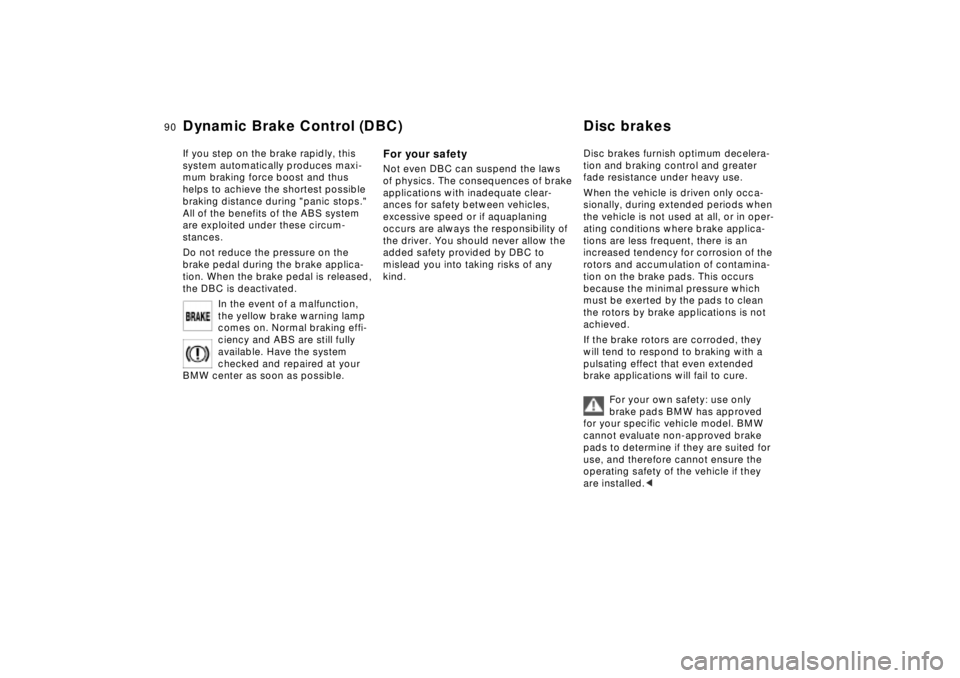
90n
Dynamic Brake Control (DBC) Disc brakesIf you step on the brake rapidly, this
system automatically produces maxi-
mum braking force boost and thus
helps to achieve the shortest possible
braking distance during "panic stops."
All of the benefits of the ABS system
are exploited under these circum-
stances.
Do not reduce the pressure on the
brake pedal during the brake applica-
tion. When the brake pedal is released,
the DBC is deactivated.
In the event of a malfunction,
the yellow brake warning lamp
comes on. Normal braking effi-
ciency and ABS are still fully
available. Have the system
checked and repaired at your
BMW center as soon as possible.
For your safetyNot even DBC can suspend the laws
of physics. The consequences of brake
applications with inadequate clear-
ances for safety between vehicles,
excessive speed or if aquaplaning
occurs are always the responsibility of
the driver. You should never allow the
added safety provided by DBC to
mislead you into taking risks of any
kind.Disc brakes furnish optimum decelera-
tion and braking control and greater
fade resistance under heavy use.
When the vehicle is driven only occa-
sionally, during extended periods when
the vehicle is not used at all, or in oper-
ating conditions where brake applica-
tions are less frequent, there is an
increased tendency for corrosion of the
rotors and accumulation of contamina-
tion on the brake pads. This occurs
because the minimal pressure which
must be exerted by the pads to clean
the rotors by brake applications is not
achieved.
If the brake rotors are corroded, they
will tend to respond to braking with a
pulsating effect that even extended
brake applications will fail to cure.
For your own safety: use only
brake pads BMW has approved
for your specific vehicle model. BMW
cannot evaluate non-approved brake
pads to determine if they are suited for
use, and therefore cannot ensure the
operating safety of the vehicle if they
are installed.<
Page 91 of 170
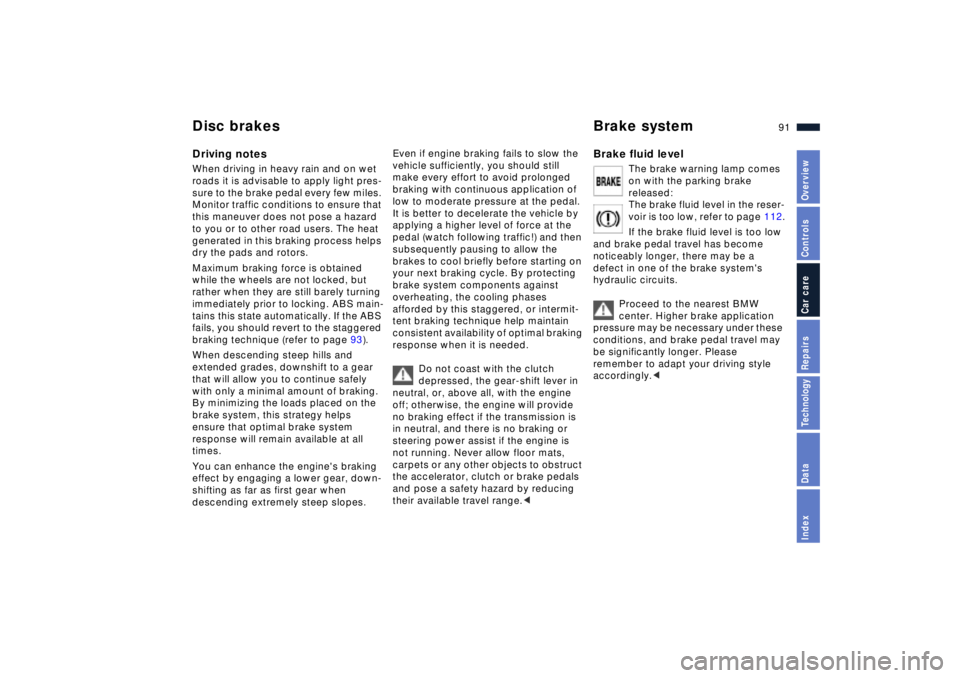
91n
IndexDataTechnologyRepairsCar careControlsOverview
Disc brakes Brake systemDriving notesWhen driving in heavy rain and on wet
roads it is advisable to apply light pres-
sure to the brake pedal every few miles.
Monitor traffic conditions to ensure that
this maneuver does not pose a hazard
to you or to other road users. The heat
generated in this braking process helps
dry the pads and rotors.
Maximum braking force is obtained
while the wheels are not locked, but
rather when they are still barely turning
immediately prior to locking. ABS main-
tains this state automatically. If the ABS
fails, you should revert to the staggered
braking technique (refer to page 93).
When descending steep hills and
extended grades, downshift to a gear
that will allow you to continue safely
with only a minimal amount of braking.
By minimizing the loads placed on the
brake system, this strategy helps
ensure that optimal brake system
response will remain available at all
times.
You can enhance the engine's braking
effect by engaging a lower gear, down-
shifting as far as first gear when
descending extremely steep slopes. Even if engine braking fails to slow the
vehicle sufficiently, you should still
make every effort to avoid prolonged
braking with continuous application of
low to moderate pressure at the pedal.
It is better to decelerate the vehicle by
applying a higher level of force at the
pedal (watch following traffic!) and then
subsequently pausing to allow the
brakes to cool briefly before starting on
your next braking cycle. By protecting
brake system components against
overheating, the cooling phases
afforded by this staggered, or intermit-
tent braking technique help maintain
consistent availability of optimal braking
response when it is needed.
Do not coast with the clutch
depressed, the gear-shift lever in
neutral, or, above all, with the engine
off; otherwise, the engine will provide
no braking effect if the transmission is
in neutral, and there is no braking or
steering power assist if the engine is
not running. Never allow floor mats,
carpets or any other objects to obstruct
the accelerator, clutch or brake pedals
and pose a safety hazard by reducing
their available travel range.<
Brake fluid level
The brake warning lamp comes
on with the parking brake
released:
The brake fluid level in the reser-
voir is too low, refer to page 112.
If the brake fluid level is too low
and brake pedal travel has become
noticeably longer, there may be a
defect in one of the brake system's
hydraulic circuits.
Proceed to the nearest BMW
center. Higher brake application
pressure may be necessary under these
conditions, and brake pedal travel may
be significantly longer. Please
remember to adapt your driving style
accordingly.<
Page 92 of 170

92n
Brake system Winter operationBrake pads
The warning lamp for the brake
pads comes on:
The brake pads have reached
their minimum thickness. Proceed to
the nearest BMW center as soon as
possible to have the pads replaced.
For your own safety: use only
brake pads which BMW has
approved for your specific vehicle
model. BMW cannot evaluate non-
approved brake pads to determine if
they are suited for use, and therefore
cannot ensure the operating safety of
the vehicle if they are installed.<
Winter is often accompanied by rapid
changes in weather, requiring not only
a different driving style, but also certain
preparations to the vehicle itself to
ensure that your progress through the
winter months remains safe and
trouble-free. CoolantBe sure that the coolant mixture
contains the year-round ratio of 50:50
water and antifreeze/corrosion protec-
tion. This mixture provides protection
against freezing down to approx. Ð 34 7
(Ð 37 6). LocksBMW door lock deicer can be used to
free doors if frozen. This deicer also
contains lubricant.
After using the deicer, treatment with
BMW lock cylinder grease is recom-
mended.
Rubber seals and components To prevent the weather-stripping from
freezing, apply a spray-on rubber treat-
ment or silicone spray to the door, hood
and luggage compartment lid seals.
A full range of car care products is
available from your BMW center.
* only in pairs
on the rear wheels with approved winter
tires. Always follow the manufacturer's
safety precautions. Do not exceed a
maximum speed of 30 mph (50 km/h).
Do not activate the RDW system while
using snow chains. Malfunction warn-
ings and undetected losses in pressure
are possible when driving with snow
chains.
Starting offWhen starting off in deep snow or when
"rocking" the vehicle to free it, it may be
advisable to temporarily deactivate the
DSC system. Refer to page 65.
To maintain vehicle stability,
always drive with the system
switched on whenever possible.<
Page 93 of 170
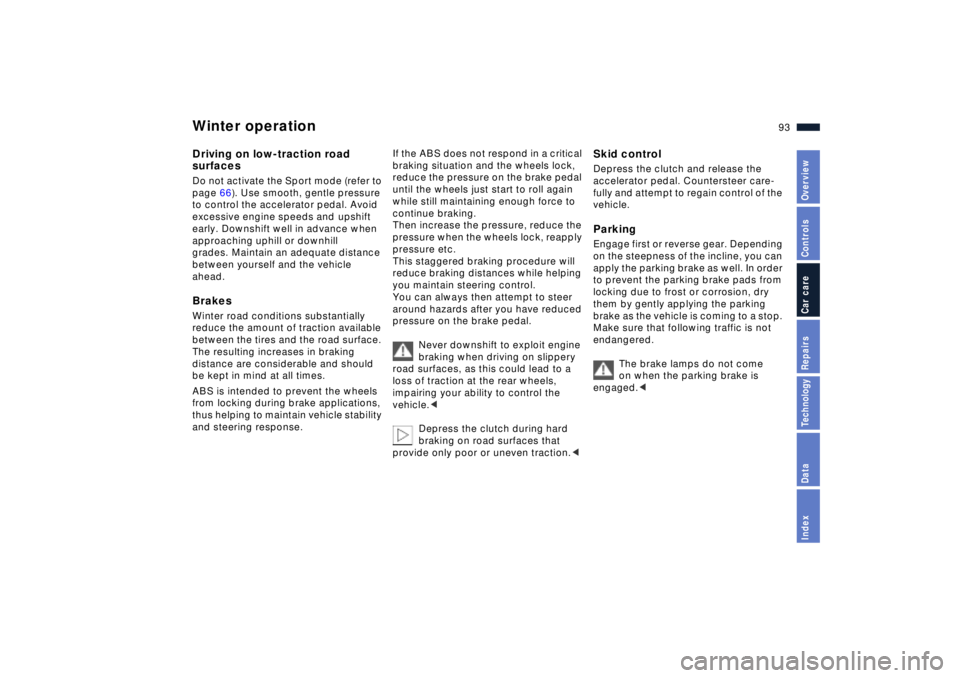
93n
IndexDataTechnologyRepairsCar careControlsOverview
Winter operationDriving on low-traction road
surfacesDo not activate the Sport mode (refer to
page 66). Use smooth, gentle pressure
to control the accelerator pedal. Avoid
excessive engine speeds and upshift
early. Downshift well in advance when
approaching uphill or downhill
grades. Maintain an adequate distance
between yourself and the vehicle
ahead.BrakesWinter road conditions substantially
reduce the amount of traction available
between the tires and the road surface.
The resulting increases in braking
distance are considerable and should
be kept in mind at all times.
ABS is intended to prevent the wheels
from locking during brake applications,
thus helping to maintain vehicle stability
and steering response.If the ABS does not respond in a critical
braking situation and the wheels lock,
reduce the pressure on the brake pedal
until the wheels just start to roll again
while still maintaining enough force to
continue braking.
Then increase the pressure, reduce the
pressure when the wheels lock, reapply
pressure etc.
This staggered braking procedure will
reduce braking distances while helping
you maintain steering control.
You can always then attempt to steer
around hazards after you have reduced
pressure on the brake pedal.
Never downshift to exploit engine
braking when driving on slippery
road surfaces, as this could lead to a
loss of traction at the rear wheels,
impairing your ability to control the
vehicle.<
Depress the clutch during hard
braking on road surfaces that
provide only poor or uneven traction.<
Skid control Depress the clutch and release the
accelerator pedal. Countersteer care-
fully and attempt to regain control of the
vehicle.ParkingEngage first or reverse gear. Depending
on the steepness of the incline, you can
apply the parking brake as well. In order
to prevent the parking brake pads from
locking due to frost or corrosion, dry
them by gently applying the parking
brake as the vehicle is coming to a stop.
Make sure that following traffic is not
endangered.
The brake lamps do not come
on when the parking brake is
engaged.<
Page 94 of 170

94n
Power steering Cellular phone Radio reception If there is a change in steering response
Ð e. g. difficult or over-responsive
steering Ð at increasing speeds, consult
a BMW center to have it checked.
If the power steering fails,
increased effort will be required to
steer the vehicle.<
Mobile communications systems
(cellular phone, radio, etc.) are
permitted with an output of up to 10
watts only. Mobile communications
devices not specifically designed for
use in your vehicle may trigger malfunc-
tions while you are operating your
vehicle. BMW can neither test nor
assume responsibility for every indi-
vidual product being offered on the
market. We recommend that you
consult your BMW center before
purchasing any device of this kind.
To ensure reliable and trouble-free
operation of your BMW, do not use any
cellular phones or other radio devices
where the antenna is located either
inside the passenger compartment or
otherwise not attached to the outside of
the vehicle.
You will find instructions for operating
your cellular phone in the supplemen-
tary Owner's Manual. The reception and sound quality
obtained from mobile radios vary
according to a variety of factors,
including the broadcast range of the
transmitter and the directional orienta-
tion of the antenna. Interference factors
such as high-tension power lines, struc-
tural or natural obstructions can all lead
to unavoidable reception interference,
regardless of how well the vehicle
sound system is operating. Climatic
factors such as intense solar radiation,
fog, rain and snow can also interfere
with reception.
Radio interference can also be caused
by either cellular phones not recom-
mended by BMW or by portable phones.
This phenomenon assumes the form of
a low-pitched hum emanating from the
speaker system.
For information on settings and opera-
tion of your radio, please refer to the
separate Owner's Manual.
Page 95 of 170
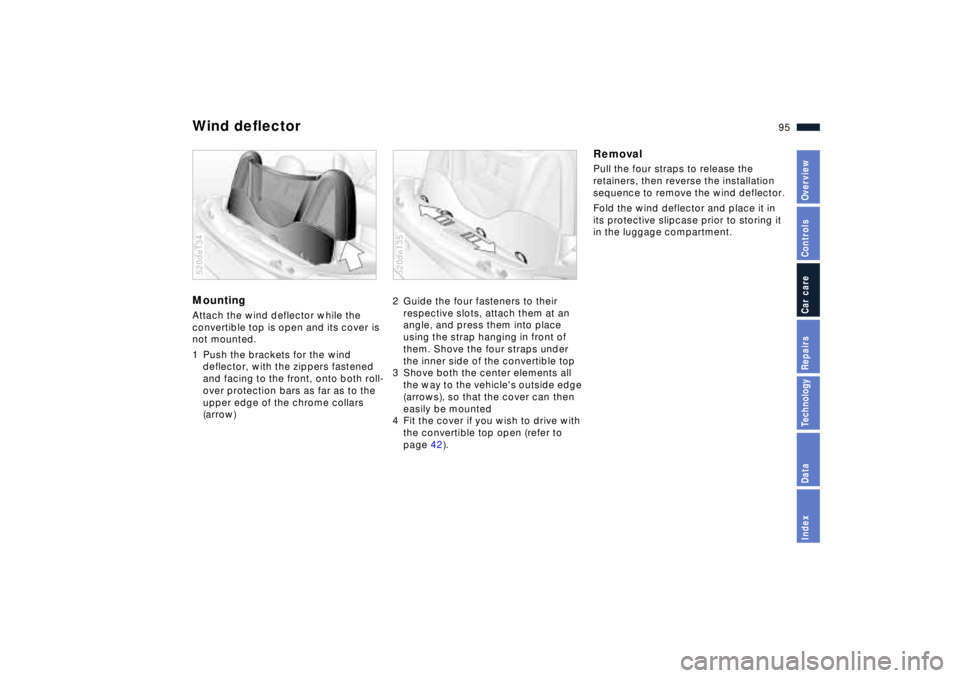
95n
IndexDataTechnologyRepairsCar careControlsOverview
Wind deflector MountingAttach the wind deflector while the
convertible top is open and its cover is
not mounted.
1 Push the brackets for the wind
deflector, with the zippers fastened
and facing to the front, onto both roll-
over protection bars as far as to the
upper edge of the chrome collars
(arrow) 520de134
2 Guide the four fasteners to their
respective slots, attach them at an
angle, and press them into place
using the strap hanging in front of
them. Shove the four straps under
the inner side of the convertible top
3 Shove both the center elements all
the way to the vehicle's outside edge
(arrows), so that the cover can then
easily be mounted
4 Fit the cover if you wish to drive with
the convertible top open (refer to
page 42).520de135
RemovalPull the four straps to release the
retainers, then reverse the installation
sequence to remove the wind deflector.
Fold the wind deflector and place it in
its protective slipcase prior to storing it
in the luggage compartment.
Page 96 of 170
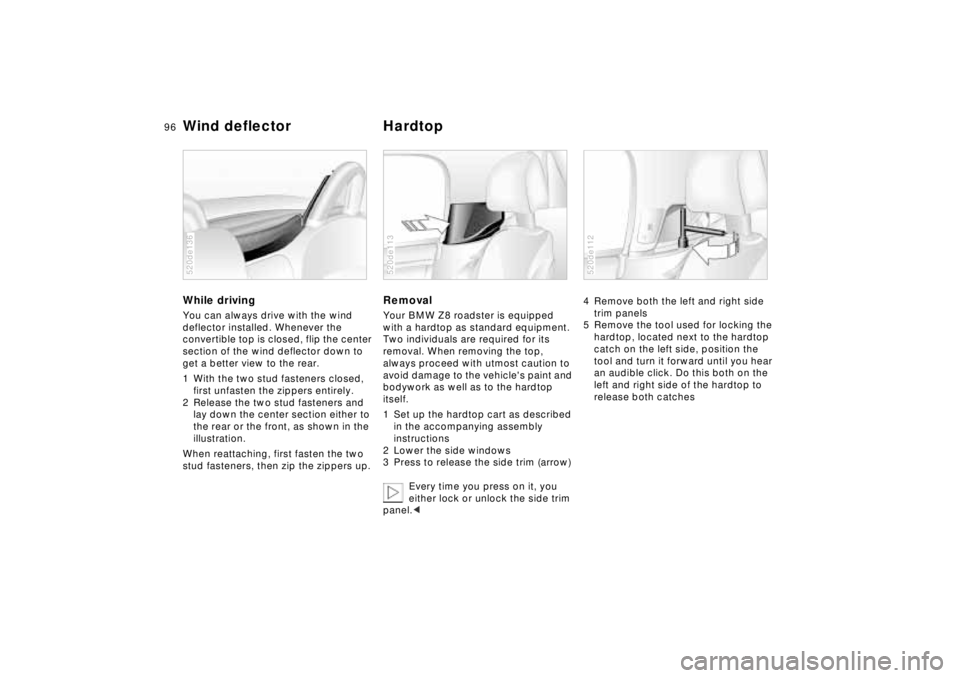
96n
Wind deflector Hardtop While drivingYou can always drive with the wind
deflector installed. Whenever the
convertible top is closed, flip the center
section of the wind deflector down to
get a better view to the rear.
1 With the two stud fasteners closed,
first unfasten the zippers entirely.
2 Release the two stud fasteners and
lay down the center section either to
the rear or the front, as shown in the
illustration.
When reattaching, first fasten the two
stud fasteners, then zip the zippers up.520de136
RemovalYour BMW Z8 roadster is equipped
with a hardtop as standard equipment.
Two individuals are required for its
removal. When removing the top,
always proceed with utmost caution to
avoid damage to the vehicle's paint and
bodywork as well as to the hardtop
itself.
1 Set up the hardtop cart as described
in the accompanying assembly
instructions
2 Lower the side windows
3 Press to release the side trim (arrow)
Every time you press on it, you
either lock or unlock the side trim
panel.<520de113
4 Remove both the left and right side
trim panels
5 Remove the tool used for locking the
hardtop, located next to the hardtop
catch on the left side, position the
tool and turn it forward until you hear
an audible click. Do this both on the
left and right side of the hardtop to
release both catches520de112
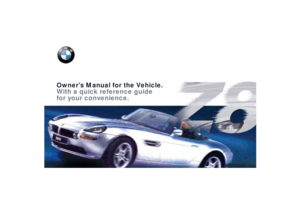 1
1 2
2 3
3 4
4 5
5 6
6 7
7 8
8 9
9 10
10 11
11 12
12 13
13 14
14 15
15 16
16 17
17 18
18 19
19 20
20 21
21 22
22 23
23 24
24 25
25 26
26 27
27 28
28 29
29 30
30 31
31 32
32 33
33 34
34 35
35 36
36 37
37 38
38 39
39 40
40 41
41 42
42 43
43 44
44 45
45 46
46 47
47 48
48 49
49 50
50 51
51 52
52 53
53 54
54 55
55 56
56 57
57 58
58 59
59 60
60 61
61 62
62 63
63 64
64 65
65 66
66 67
67 68
68 69
69 70
70 71
71 72
72 73
73 74
74 75
75 76
76 77
77 78
78 79
79 80
80 81
81 82
82 83
83 84
84 85
85 86
86 87
87 88
88 89
89 90
90 91
91 92
92 93
93 94
94 95
95 96
96 97
97 98
98 99
99 100
100 101
101 102
102 103
103 104
104 105
105 106
106 107
107 108
108 109
109 110
110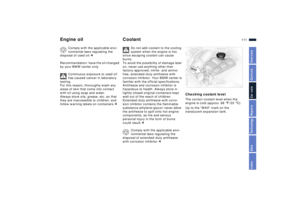 111
111 112
112 113
113 114
114 115
115 116
116 117
117 118
118 119
119 120
120 121
121 122
122 123
123 124
124 125
125 126
126 127
127 128
128 129
129 130
130 131
131 132
132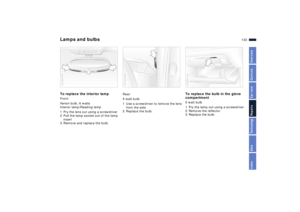 133
133 134
134 135
135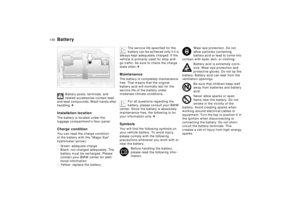 136
136 137
137 138
138 139
139 140
140 141
141 142
142 143
143 144
144 145
145 146
146 147
147 148
148 149
149 150
150 151
151 152
152 153
153 154
154 155
155 156
156 157
157 158
158 159
159 160
160 161
161 162
162 163
163 164
164 165
165 166
166 167
167 168
168 169
169






